Key KPIs to boost the success of your hotel marketing strategy
In the competitive world of hospitality, an effective marketing strategy transcends simple guest attraction; Its true value lies in the ability to generate profitable and sustainable growth in the long term. To discern whether the initiatives implemented are paying off, measurement through key performance indicators (KPIs) stands as a fundamental pillar.
This exhaustive analysis deepens in the most transcendental KPIs that we use in DIGISAP to optimize the performance of hotels throughout Medellin and Colombia. Our methodology focuses on ensuring a steady increase in reserves, income and, therefore, the overall profitability of the hotel business.
The crucial importance of measuring KPIs in hotel marketing
Imagine sailing on the high seas without the guidance of a compass; This analogy perfectly illustrates hotel marketing management without a clear metric. KPIs provide the necessary guidance for:
- Assess the profitability of digital strategies:They allow to determine if the investment in the online environment is generating a positive return and justifying the effort and the resources used.
- Identify areas for improvement to maximize direct reserves:When analyzing the data, weak points can be discovered in the reservation process or in the user experience that, once optimized, drives the reservations made directly through the hotel’s website.
- Optimize advertising investment and reduce unnecessary costs:KPI monitoring reveals which advertising campaigns are most effective and which are not generating the expected results, allowing for smarter budget allocation and elimination of unproductive expenses.
- Ensure the effectiveness of recruitment and loyalty strategies:KPIs offer a clear insight on whether actions designed to attract new guests and foster loyalty of existing ones are meeting their goals.
At DIGISAP, marketing decision-making is based on rigorous analysis of specific data. This approach ensures that each action undertaken is oriented to the achievement of measurable results and, even more importantly, scalable over time.
Exploring Essential KPIs in Hotel Marketing
Below, we break down the key performance indicators that we consider essential to evaluate and optimize the marketing strategy of any hotel:
1. ROAS (Return on Ad Spend) – The return on your advertising investment
ROAS is a crucial financial indicator that evaluates the efficiency of digital advertising investment. In essence, it measures how much income each dollar (or Colombian peso) invested in online campaigns generates.
Formula:
ROAS= Income generated by advertising / investment in advertising
Practical example:
Let’s consider a hotel that invests $5,000 in Google Ads campaigns and, as a direct result of these campaigns, generates $25,000 USD in reservations. Applying the formula:
ROAS = 25,000 / 5,000 = 5x
This result indicates that for every dollar invested in advertising, the hotel recovered five dollars in reservation income.
Interpretation of ROAS in the hotel sector:
- Roas less than 3x:He points out that the advertising strategy is not profitable enough and requires urgent optimization. It is necessary to analyze which campaigns are not working and make adjustments to improve their performance.
- Roas between 3x and 5x:It indicates an acceptable return, but there is still room to improve the efficiency of advertising investment. New segmentations, creatives or channels can be explored to increase return.
- Roas greater than 5x:It represents an excellent return on advertising investment, indicating that campaigns are generating a significant return.
DIGISAP-driven success stories:
- The Sky Hotel:It has consistently maintained a ROAS greater than 50, demonstrating highly efficient and profitable long-term advertising management.
- Binn Hotel:He managed to triple his reservations in a period of just three months, reaching an impressive 20x ROAS thanks to a well-defined and executed advertising strategy.
2. Website conversion rate – transforming visits into reservations
This KPI measures the efficiency with which a hotel website turns visitors into real guests. Indicates the percentage of users who, after browsing the page, finish the process by making a reservation.
Formula:
Conversion rate= (Reservations made / Visits to the website) ×100
Practical illustration:
If the website of a hotel receives 10,000 visits in a month and during that same period 200 reservations are made through the web, the conversion rate is calculated as follows:
Conversion rate= (200 / 10,000) ×100=2%
This means that 2% of visitors to the hotel website made a reservation.
Hotel benchmarks:
- Less than 1%:It suggests the need for a comprehensive website optimization, including the user experience (UX), the booking engine and the quality of the content presented.
- Between 1% and 3%:The average conversion rate is considered within the hotel sector.
- More than 3%:Indicates excellent digital performance, reflecting an effective website optimized for conversion.
Tangible results with the intervention of DIGISAP:
- Haven Medellin:It experienced a significant improvement in its conversion rate, going from 1.2% to 3.8% in a six-month period thanks to the strategies implemented by DIGISAP.
- Irotama Hotel:After optimizing its reserve engine, it achieved a notable increase in its web conversion rate, going from 12.4% to 17.4%, which resulted in a substantial increase in direct reserves.
3. Hotel occupancy (%) – measuring the full of your rooms
This fundamental KPI measures the percentage of available rooms that were occupied for a specific period of time (day, week, month, etc.). It is a direct indicator of the demand and the ability of the hotel to attract guests.
Formula:
Occupation rate= (Rooms sold / rooms available) ×100
Specific example:
If a hotel has 100 rooms and manages to sell 80 of them on a given day, its occupancy rate for that day would be:
Occupation Rate=(80/100) ×100=80%
Occupation objectives for hotels:
- Less than 50%:Indicates a low demand and the need to implement attractive promotion strategies and promotions to increase occupancy.
- Between 50% and 75%:It is considered an acceptable level of occupancy, but there is still room to optimize demand and maximize income.
- More than 75%:It reflects excellent performance and effective demand management. At this point, strategies to increase the average daily rate (ADR) can be explored.
DIGISAP’s impact on hotel occupancy:
- Binn Hotel:It increased its occupancy rate from 58% to 82% in just four months thanks to the implementation of strategic digital campaigns and the optimization of its SEO positioning.
- Haven Medellin:It managed to maintain higher levels of occupancy even during the offseason by implementing effective remarketing campaigns aimed at specific audiences.
4. ADR (average daily rate – average daily rate) – the value of each night sold
ADR is an indicator that reveals the average income generated by each occupied room during a specific period. It is a key metric to assess the profitability of room sales.
Formula:
ADR= Total room income / number of rooms sold
Illustrative example:
If a hotel generates $50,000 in total revenue from the sale of rooms and during that period 200 rooms were sold, the ADR is calculated as:
ADR= 50,000 / 200 = 250 USD
This means that, on average, each occupied room generated $250 USD in income.
Strategies to raise ADR:
- Upselling and premium packages:Offering guests the ability to upgrade their reservation to a superior room or add additional services to their stay can significantly increase ADR.
- Demand-based Revenue Management strategies:Dynamically adjusting room prices based on market demand, season and other factors can maximize revenue.
- Price optimization in high and low seasons:Establishing competitive but profitable rates during periods of high demand and offering more attractive prices during the offseason can balance occupancy and ADR.
Results obtained with the experience of DIGISAP:
- Irotama Hotel:It achieved a 15% increase in its ADR through the implementation of customer loyalty strategies and remarketing campaigns aimed at specific segments.
- The Sky Hotel:It managed to increase its rates by 20% without this negatively affecting its occupancy rate, demonstrating a solid pricing strategy and an attractive value proposition for its guests.
5. RevPAR (Revenue per Available Room – Income per room available) – The complete picture of your income
The RevPAR is a holistic indicator that combines the Average Daily Rate (ADR) and occupancy rate to offer a complete view of the income generated by each room available at the hotel, regardless of whether it is occupied or not.
Formula:
RevPAR= ADR × Occupation Rate
Practical application:
If a hotel has an ADR of $250 USD and an occupancy rate of 80% (or 0.80 decimal), your RevPAR is calculated as follows:
revpar=250×0.80=200 USD
This indicates that, on average, each room available at the hotel generated $200 USD in income.
Strategies to enhance the REVPAR:
- Increase ADR through smart pricing strategies:Implementing dynamic pricing tactics and offering added value to reservations can increase the average rate.
- Increase occupation through promotions and loyalty:Attracting more guests and encouraging the repetition of stays directly contributes to greater occupancy.
- Optimize distribution between direct channels and OTAs:Effectively managing the hotel’s presence on different online booking platforms (OTAS) and encouraging direct bookings can positively influence the RevPAR.
Success story with DIGISAP collaboration:
- Haven Medellin:It experienced a significant 30% increase in its RevPAR over a six-month period thanks to the implementation of strategic digital campaigns and a comprehensive optimization of its rates.
Ensuring the sustainable success of your hotel marketing strategy
Measuring the correct KPIs is not just an administrative task; It is the foundation on which the long-term success of any hotel is built. At DIGISAP, we combine data analytics with state-of-the-art technology and a continuous optimization philosophy to ensure solid and tangible results for our customers, translating into:
- A significant increase in direct reserves:Reducing the dependence on the commissions of online travel agencies (OTAs) and improving profitability.
- higher overall profitability:Thanks to the optimization of advertising investment and the maximization of income per room.
- A sustained increase in web traffic and conversion:attracting a more qualified audience and facilitating the online reservation process.
- A steady increase in hotel occupancy and total income:ensuring sustainable growth and a competitive position in the market.
Do you want to accurately measure and significantly improve your hotel performance? We invite you to contact us throughwww.digisap.comand schedule free advice. We are ready to boost your success!





